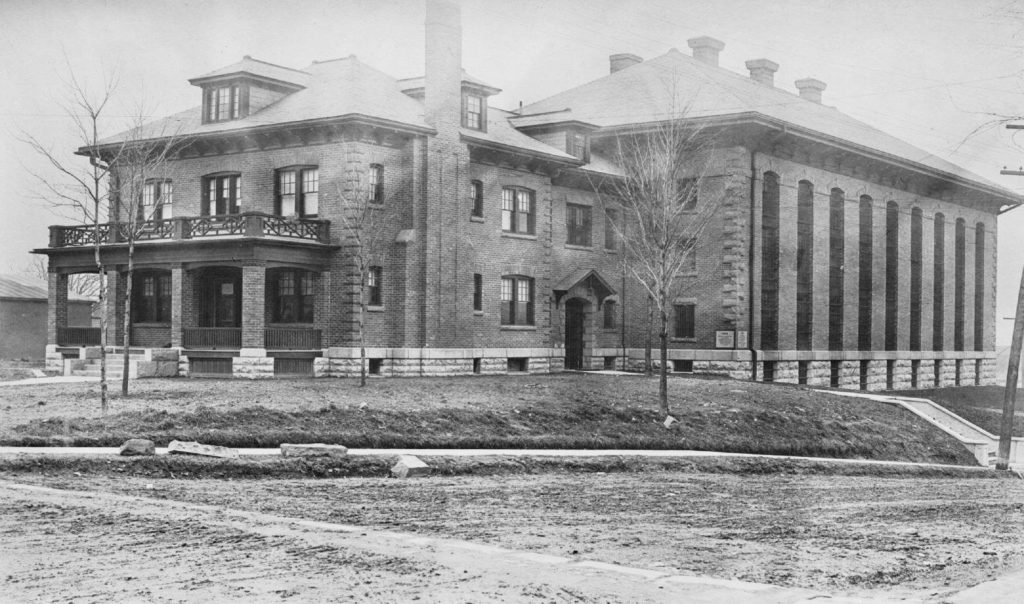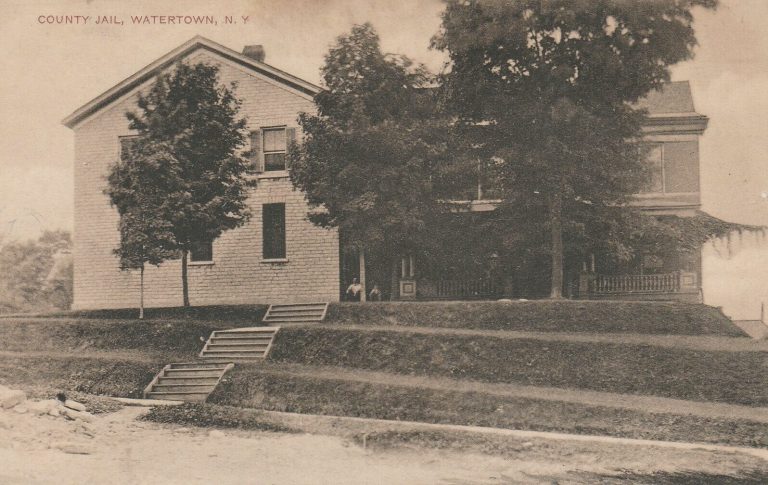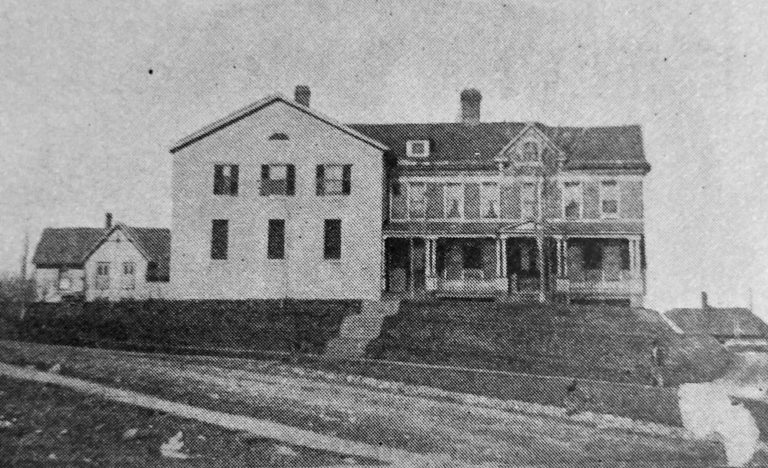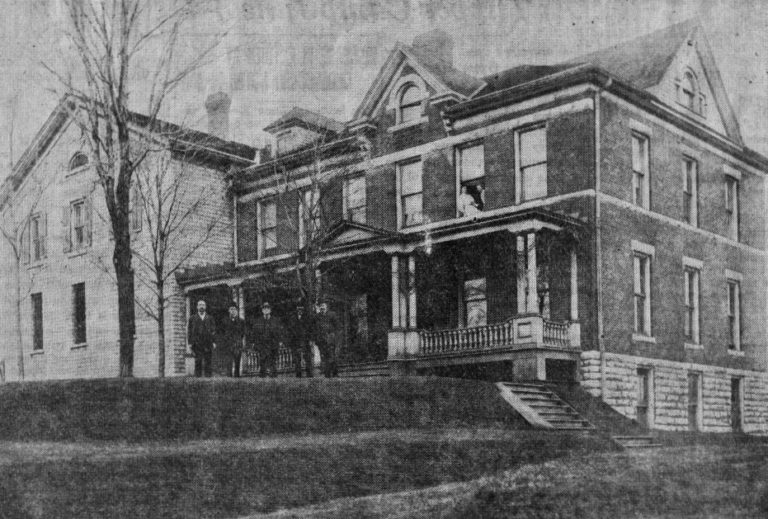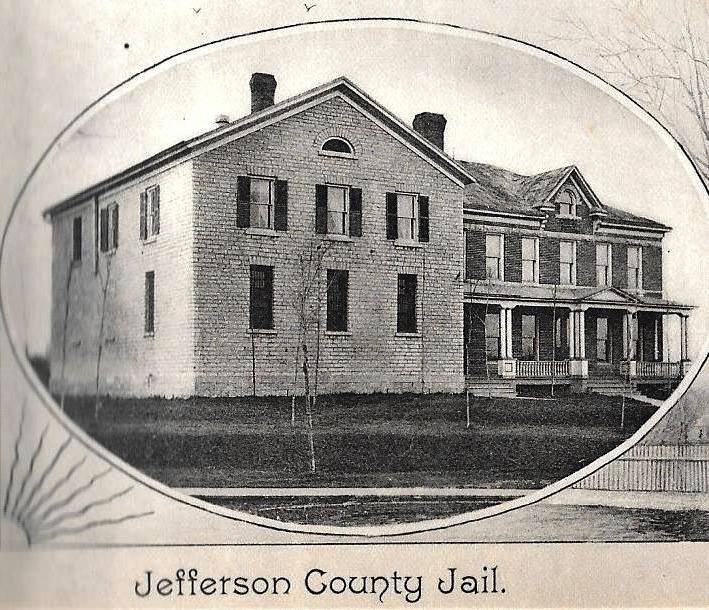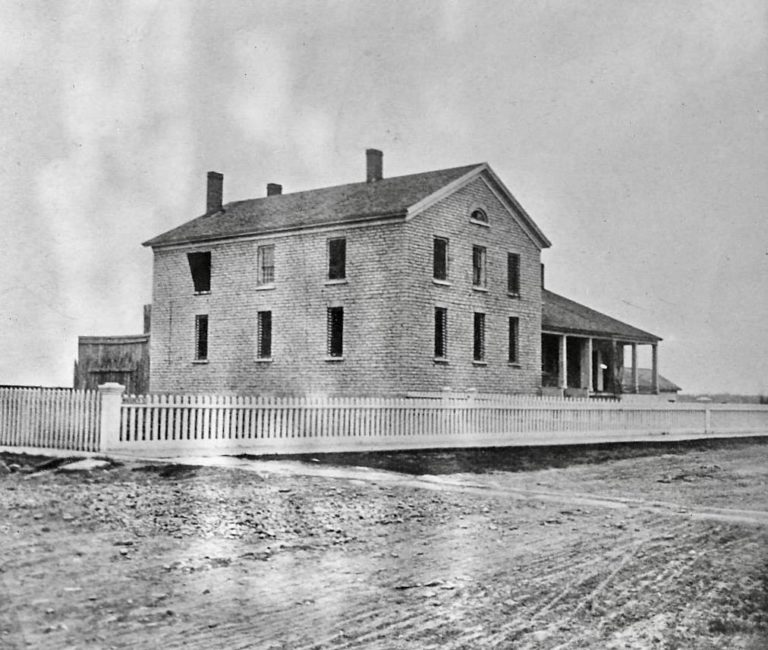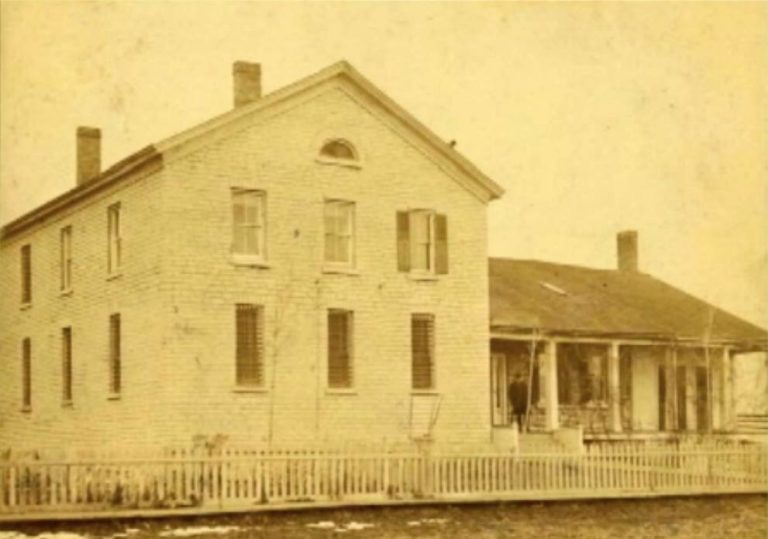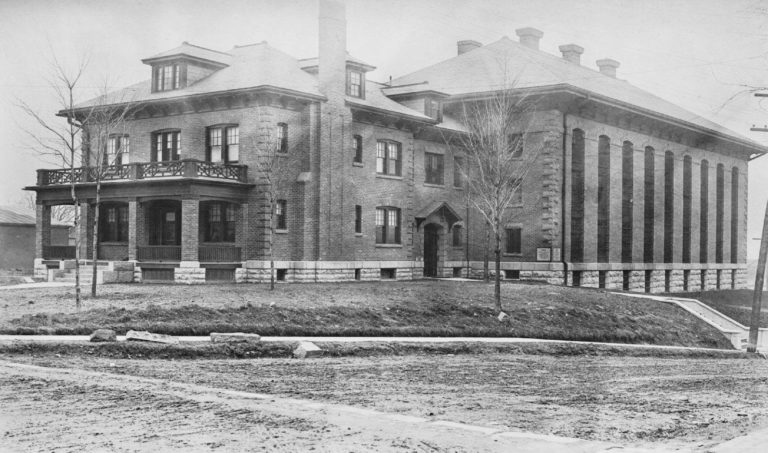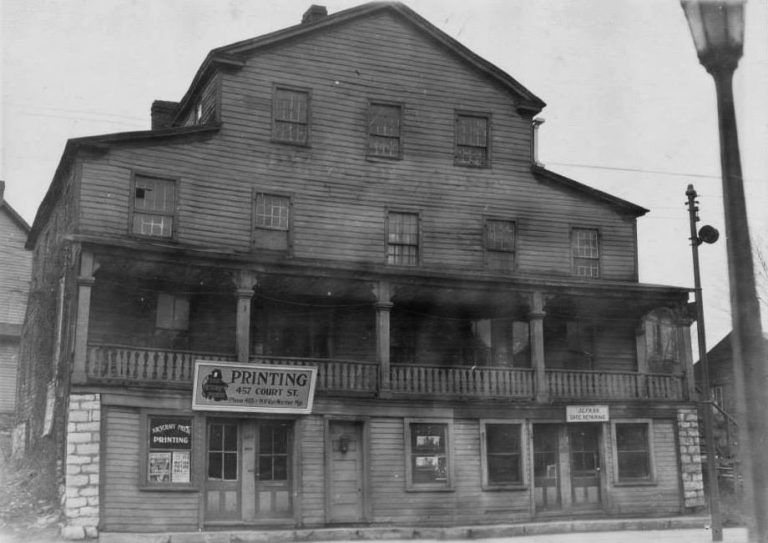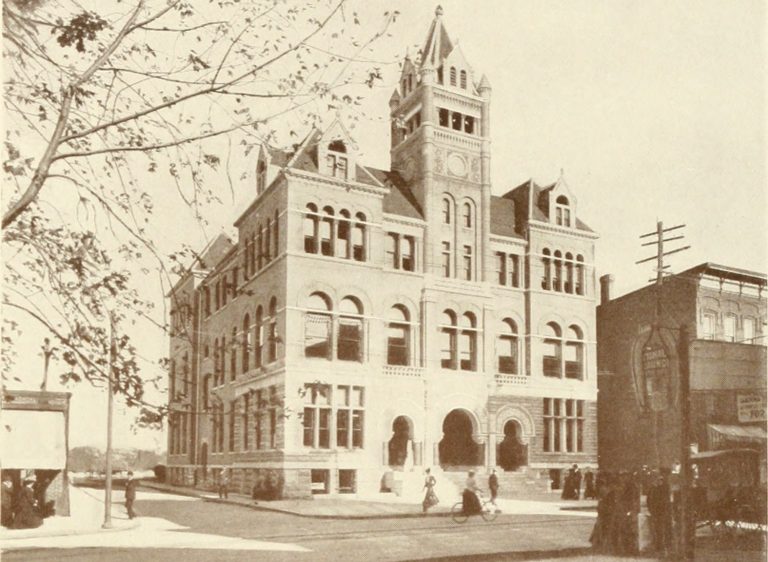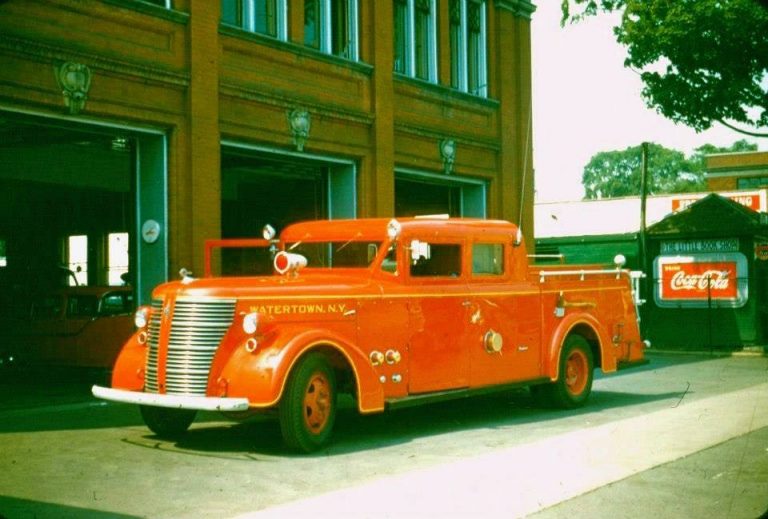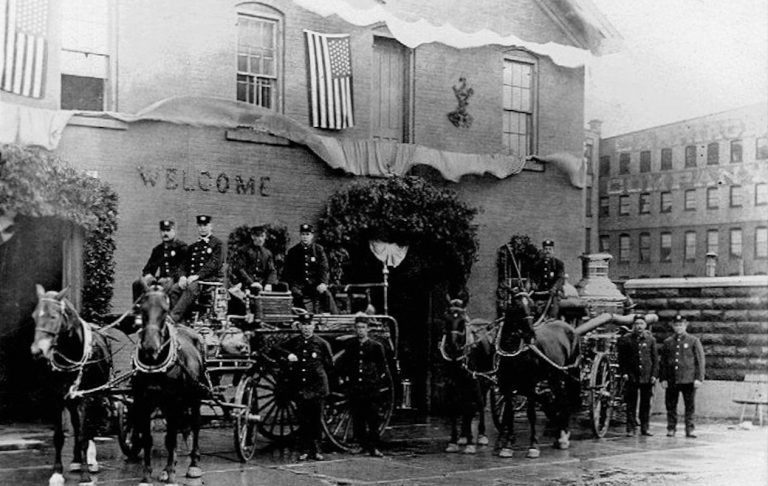The Old Jefferson County Jail (c. 1850 – 1910)
In the early days of settlement, much jockeying for land and titles occurred in an effort to gain credibility towards a future county seat. In 1805, Henry Coffeen, a local judge and settler, in a bid to add legitimacy to the area’s contention of such a seat, donated land atop Coffeen Street at Court and Massey Streets to be used for a county jail.
As told in “Through Eleven Decades of History: Watertown, a history from 1800 – 1912”
The wheels of progress moved rapidly from this time on. Judge Coffeen donated the land for the Court House and Jail at the north end of Court street. William Rice and Joel Mix had the contract for the building of the Court House and Jail combined.
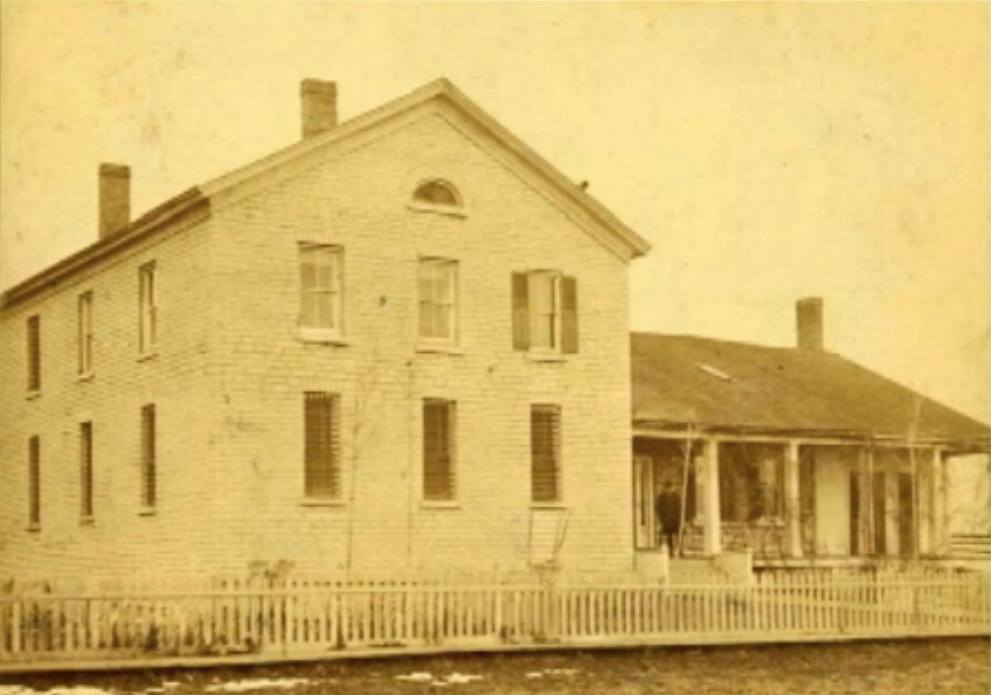
Thus the street the jail and courthouse faced was named Court Street. The old Jefferson County Courthouse would be completed in 1807, but burn in fire 14 years later in 1821. They would be rebuilt, but, according to legislation at the time around the great fire in 1849, there was a dire need for a new facility.
A two-story addition was erected in 1848 next to the older jail built in 1821 to fulfill the need for an expanded facility. Both structures managed to survive unscathed by the conflagration that devastated a good portion of downtown Watertown at the time. In 1850, it was noted by the New York Reformer that over 50% of the inmates in the old Jefferson County jail were incarcerated due to violations of the law which occurred while intoxicated.
The function of the court would move to Arsenal Street c. 1862, with stone from the existing structure used in its new location on the corner of Arsenal and (then) Benedict Streets where it still stands today (although the function of the courthouse has recently moved to the new/expanded County Courthouse Complex down the street.)
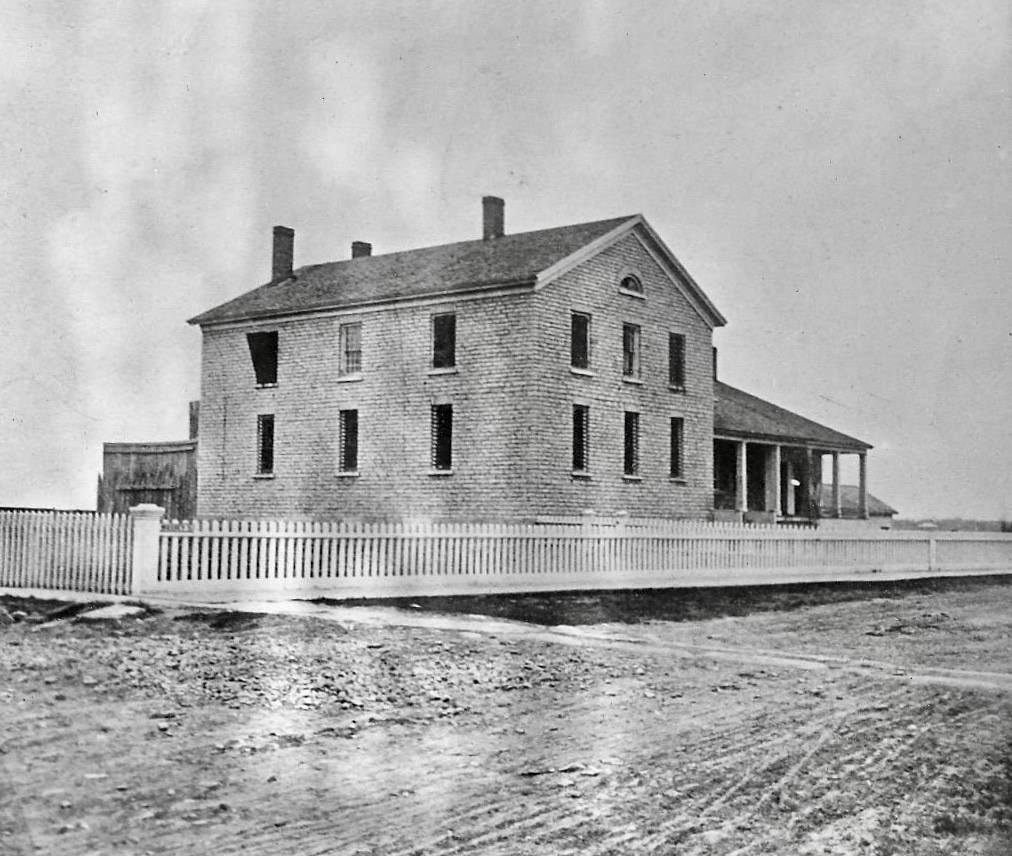
In 1892, the question came up for the need of a new jail that would comply with the law that was already 50-years on the book. The old Jefferson County jail was considered dilapidated and poorly equipped. When it came up again a week or two later on December 6, the Watertown Daily Times wrote–
Mr. Wilder asked what the plans in reference to the repairs were. He did not think the board should be asked to act on the matter blindly. If the sheriff’s residence was to be made in the form of an addition on the Coffeen Street side he was in favor of it, but if an attempt was to be made to patch up the old place he was opposed to it. He was no stickler for a new jail, he said, but he didn’t believe in wasting money by attempting to fix up an old, dilapidated structure just to get around the law.
In February of 1893, a contract would be awarded for the re-construction of the interior of the old Jefferson County jail building to make it comply with the existing law. The new configuration would allow for a jailer to operate the locks by means of a lever controlling the cells on either tier rather than having to enter a department to lock or unlock them.
Ten days later, the committee would hash out new arrangements involving the new sheriff’s residence, to face Coffeen Street, but some opinions differed as to which side of the jail it should be built on. Finally, the motion was stricken to build it on the north side of the current jail.

15 years later, in January of 1908, a new committee with new members would once again be looking at constructing a new, bigger and modern structure to replace the old Jefferson County jail. The task would send the committee on a tour of other New York State jails.
Much like Emma Flower Taylor did with the construction of the Roswell P. Flower Memorial Library, a contest would be held for best designs. That story of the new County Jail which replaced this in 1910, as shown below, can be found here.
